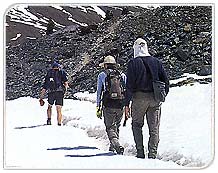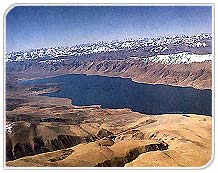Ladakh Travel Guide
---------------------------------------------------------------------------------------------------------------------------------------------------------------------------------------------------------------------------------
Ladakh Home » About Ladakh Travel Guide » Religion & Culture » Historical Background » Ancient Routes » Modern Routes
Central Ladakh » Fairs & Festivals » Oracles & Astrologers » Arts & Crafts » Cultural Tourism » Archery & Polo » Adventure in Ladakh
The New Areas » Tourist Information » Air Line Ticketing » Car Coach Rentals In Ladakh
Travel Agents & Tour Operators in Ladakh » Hotels & Resorts in Ladakh » Map »Travellers Tools
---------------------------------------------------------------------------------------------------------------------------------------------------------------------------------------------------------------------------------
Ladakh Home » About Ladakh Travel Guide » Religion & Culture » Historical Background » Ancient Routes » Modern Routes
Central Ladakh » Fairs & Festivals » Oracles & Astrologers » Arts & Crafts » Cultural Tourism » Archery & Polo » Adventure in Ladakh
The New Areas » Tourist Information » Air Line Ticketing » Car Coach Rentals In Ladakh
Travel Agents & Tour Operators in Ladakh » Hotels & Resorts in Ladakh » Map »Travellers Tools
---------------------------------------------------------------------------------------------------------------------------------------------------------------------------------------------------------------------------------
Adventure in Ladakh
Trekking in Ladakh
 Trekking
possibilities include short, day-long walks up and down mountain slopes to
visit isolated villages or monastic settlements, or across a ridge to enjoy
the sheer beauty of the lunar mountainscape. Or long, transmountain treks
involving weeks of walking and camping in the wilderness. For example, the
trek from Lamayuru in the Indus valley to Darcha in Lahoul across Zanskar
takes nearly three weeks. Most of the established routes traverse the Zanskar
range which separates the Indus Valley from Zanskar. The 10- day Markah valley
trek, the 11- day Lamayrur-Padum traverse and the stock-Khangri round trek
are the more popular ones among the numerous options available in this convoluted
mountain mass. In recent years, parts of the Ladakh range between the Indus
and Shayok valleys have also become available fro trekking The traditional
trekking season extends from early June to mid-October. But localised treks
within the Indus Valley can undertaken even in May. On the other hand, some
routes are suitable only for late autumn as during the summer, the bed of
narrow valleys through which the tracks lie become turbulent streams, as in
the case of the 13-day Hemis-Markha-Padum trek. The winter access to the Zanskar
Valley is actually along the frozen surface of the Zanskar river. This route,
known as Chaddar, calls for elaborate arrangements, but it is perhaps the
most exciting trek in the world.
Trekking
possibilities include short, day-long walks up and down mountain slopes to
visit isolated villages or monastic settlements, or across a ridge to enjoy
the sheer beauty of the lunar mountainscape. Or long, transmountain treks
involving weeks of walking and camping in the wilderness. For example, the
trek from Lamayuru in the Indus valley to Darcha in Lahoul across Zanskar
takes nearly three weeks. Most of the established routes traverse the Zanskar
range which separates the Indus Valley from Zanskar. The 10- day Markah valley
trek, the 11- day Lamayrur-Padum traverse and the stock-Khangri round trek
are the more popular ones among the numerous options available in this convoluted
mountain mass. In recent years, parts of the Ladakh range between the Indus
and Shayok valleys have also become available fro trekking The traditional
trekking season extends from early June to mid-October. But localised treks
within the Indus Valley can undertaken even in May. On the other hand, some
routes are suitable only for late autumn as during the summer, the bed of
narrow valleys through which the tracks lie become turbulent streams, as in
the case of the 13-day Hemis-Markha-Padum trek. The winter access to the Zanskar
Valley is actually along the frozen surface of the Zanskar river. This route,
known as Chaddar, calls for elaborate arrangements, but it is perhaps the
most exciting trek in the world. Depending on the time and budget you can afford, ask the Tourist Offices at Leh, Kargil or Padum to design a trekking programme for you. For more inforamtion about trekking through the Zanskar mountains and across the Great Himalayan Wall, ask for a free copy of our brochure, Ladakh-Kargil and Zanskar from any J&K Tourist Office.
The easiest way to go on a trek is through a travel agency, which will take care of all arrangements including camping gear, provisions, porterage, staff, etc. But if you intend to make you own arrangements, it is advisable to carry as much of your provision and fuel from Leh or Kargil as possible. Please remember that Ladakh is a harsh land where most villagers cannot part with their foodstock. In some villages along the trek, fresh yoghurt and some tsampa can be procured, but these sources cannot be relied upon. Kerosene or gas for cooking stoves must be carried in sufficient quantity to last the duration of the trek as fuel is unlikely to be available along most of the route.
The Ladakh environment is ecologically fragile as the survival of the inhabitants depends upon the land, despite its apparent starkness. As such, it is absolutely important that trekkers keep the routes and campsites clean and avoid disturbing the region's delicate environment. Before striking camp, trekkers and travel agents
 should
ensure that no garbage is left undisposed at the campsites. Plastic containers
and polythene wrappers must be incinerated, while other types of garbage should
be properly buried. In this context, it is advisable to follow the instructions
regarding preservation of environment contained in the Indian Mountaineering
Foundation's publication; while in the Himalays-Dos and Don'ts, which can
be obtained from the I.M.F. headquarters in Delhi, or any of tis subsidiaries.
should
ensure that no garbage is left undisposed at the campsites. Plastic containers
and polythene wrappers must be incinerated, while other types of garbage should
be properly buried. In this context, it is advisable to follow the instructions
regarding preservation of environment contained in the Indian Mountaineering
Foundation's publication; while in the Himalays-Dos and Don'ts, which can
be obtained from the I.M.F. headquarters in Delhi, or any of tis subsidiaries.
For trekking in Ladakh to be a rewarding experience, it is not enough to be physically fit; intending trekkers must also be prepared to face the rigours to back country travel. There are considerable fluctuations in day and night temperatures even during the height of summer. While the days are pretty warm, even hot, due to the desert effect of the barren landscape, evenings can become chilly, requiring additional clothing. It is , therefore, advisable to keep a pullover and/ or an anorak handy. A sturdy pair of walking shoes with strong rubber or synthetic soles for grip, thick cotton socks (woolen for autumn trek or glacier walks ) and a good sleeping bag together with an insulated ground pad are essential gear for going on a trek even if you may be passing through inhabited areas with the possibility of accommodation in village homes or monasteries. In case of extended treks across mountain passe or trans-mountain traverses, a water-proof tent will have to be carried besides provisions and cooking gear, all backpacked in a good quality ruchsack.
Additional requirements could include a balclava, woolen undergarments, wind parkas, etc. Toiletries and first-aid kits should include lipsalve, moisturisers and suncream, water purifying tablets, medicines for high altitude sickness, etc. A good quality water canteen is must to carry the drinking water so essential during high altitude trekking in arid conditions. Do not forget to carry a flashlight with sufficient spare batteries,a sun-hat and a pair of good quality sunglasses with sufficient filter-factor to check the sun's brightness and ultraviolet rays.
The J&K Tourism Department maintains trekking equipment hire shops in its Srinagar, Leh and Kargil Offices. Imported items like tow-man tents, insulated ground sheets, sleeping bags, insulated jackets, trekking shoes and ruckscks are available at these sops at reasonable charges fixed by the Government. Some private establishments and , trekking agencies in Leh also provide similar trekking gear on hire.
Ladakh Home »
About Ladakh Travel
Guide » Religion
& Culture » Historical
Background » Ancient
Routes » Modern
Routes
Central Ladakh » Fairs & Festivals » Oracles & Astrologers » Arts & Crafts » Cultural Tourism » Archery & Polo » Adventure in Ladakh
The New Areas » Tourist Information » Air Line Ticketing » Car Coach Rentals In Ladakh
Travel Agents & Tour Operators in Ladakh » Hotels & Resorts in Ladakh » Map »Travellers Tools
Central Ladakh » Fairs & Festivals » Oracles & Astrologers » Arts & Crafts » Cultural Tourism » Archery & Polo » Adventure in Ladakh
The New Areas » Tourist Information » Air Line Ticketing » Car Coach Rentals In Ladakh
Travel Agents & Tour Operators in Ladakh » Hotels & Resorts in Ladakh » Map »Travellers Tools